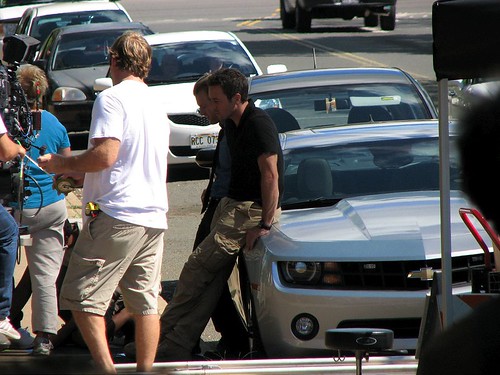Having a specific code of ethics for a given industry is
problematic in that no two situations are alike. One could argue that there are
fundamental ethics principles we should follow. That is true, but it seems that
this type of thinking flies out the window when the focus is turned to the
internet. As a blogger, there are a few different approaches that separate us
from spammers and the surprising amount of crazy people who spout wild theories
best suited for the lunch table at a ward for the criminally insane. Firstly, a
blogger could define themselves as a journalist and follow the Society of
Professional journalist’s ethics code led by the title “seek truth and report
it.” But blogs aren’t online newspapers. They’re less formal usually. Through a
pretty thorough Google search, the best blogging code of ethics I could find
comes from O’Reilly Media founder Tim O’Reilly.
The seven items he lists are below.
1. Take
responsibility not just for your own words, but for the comments you allow on
your blog.
2. Label your
tolerance level for abusive comments.
3. Consider
eliminating anonymous comments.
4. Don't feed the
trolls. (Someone who posts off-topic comments)
5. Take the
conversation offline, and talk directly, or find an intermediary who can do so.
6. If you know
someone who is behaving badly, tell them so.
7. Don't say
anything online that you wouldn't say in person.
Now this list is more a behavioral guide than a declaration
for providing the truth. But that’s okay because blogging does not have as many
obligations as a newspaper or news website does. But because of that, it often
gets a bad reputation. Like Patterson and Wilkins say in “Media Ethics,” you
can’t blame the vessel for how people use it. (57) The textbook uses the room
of requirement from Harry Potter as an example, which is quite welcome from
this fan of all things wizarding world.
 |
| "Hawaii 5-0" actors on the show's Camaro (Source: http://www.camaro5.com/forums/showthread.php?t=112654) |
Since I was unable to find a case-study in the textbook
referring to blogging, I found one that related to an issue occurring in all
media. In case study 3-D on page 76 of the text, there is a discussion about
product placement on television shows. For TV the use of real brand names could
be for shameless plug, a realistic touch or both. When applying O’Reilly’s
blogger’s code of conduct, a number of these issues can be applied to those of
us online trying not to cross the line. The one that stands out most is number
seven. “Don’t say anything online that you wouldn’t say in person.” The meaning
is meant to prevent mindless insults or bigotry, but what about with product placement?
Would a real life Michael Scott boast the brand name of the jeans he was
wearing? Or an even more extreme example, would a real member of Hawaii 5-0
repeatedly bring up their Windows phones and Chevy cars, probably not. So they
wouldn’t be said in real life? Nix them from the show, blog, movie, etc. The
code also proves helpful in dealing with the critics that would most definitely
arise.
But since television isn’t as much of an open forum as
blogging, the code isn’t completely helpful in comparison with the case study.
Is product placement an issue in blogs? Potentially, yes. I recently found that
an extension was unknowingly downloaded onto my web browser which made a small
box appear on the side of my screen featuring products related to the site I
was visiting. I won’t say the name so they don’t seek me out again. But
whatever the site was that had this virus, definitely broke the code of conduct
and forced product placement on me just like television does.
 |
| A shot from a Nickelodeon show with a Pear computer (source: http://icarly.wikia.com/wiki/Pear_Company) |
Supplementing the O’Reilly code of conduct with Aristotle’s
Golden Mean makes things a little clearer. Product placement is okay when it
fits in between those extremes. A few products to add authenticity to the show
is acceptable. If the plot stops to make sure products get their air time that
is too much. If there are pear shapes on the fronts of the laptops instead of
apples, like there is on Nickelodeon, they might as well make a few dollars and
put the sponsor on there.
But using a more cut and dry ethical perspective like
utilitarianism shows that the result of the action is worth it. Placing this product
in the show could boost sales, build the company and provide more jobs. When
put that way it seems pretty inconsequential whether a character is drinking “Pepsi”
or “Popsi.” So going by the two different ethical perspectives, there isn’t a
clear cut answer in this case study.
I’ve mentioned it in a previous post, but Aristotle’s golden
mean repeatedly proves to be the most helpful perspective when approaching
potential dilemmas. People are allowed a little leniency with their decision
making and can interpret the mean depending on their own personal ethics. They don’t need to do anything like some of the others preach. Just investigate the full situation and come
up with a solution that doesn’t tip the scale in either direction.
No comments:
Post a Comment